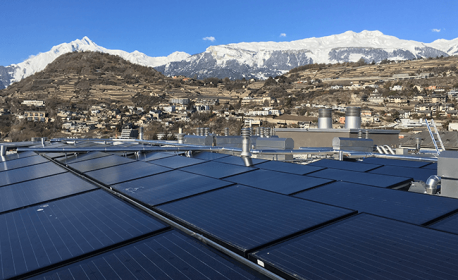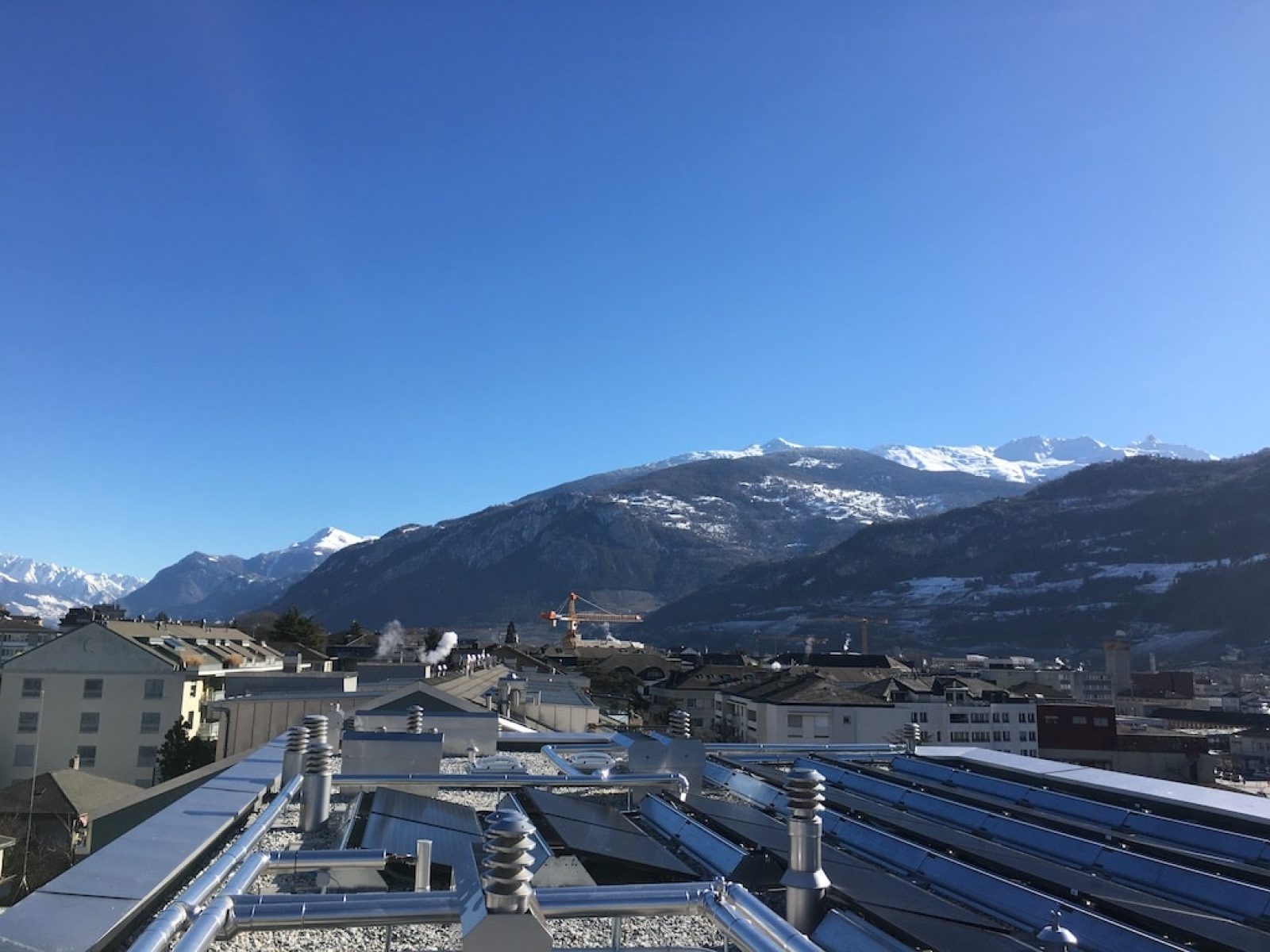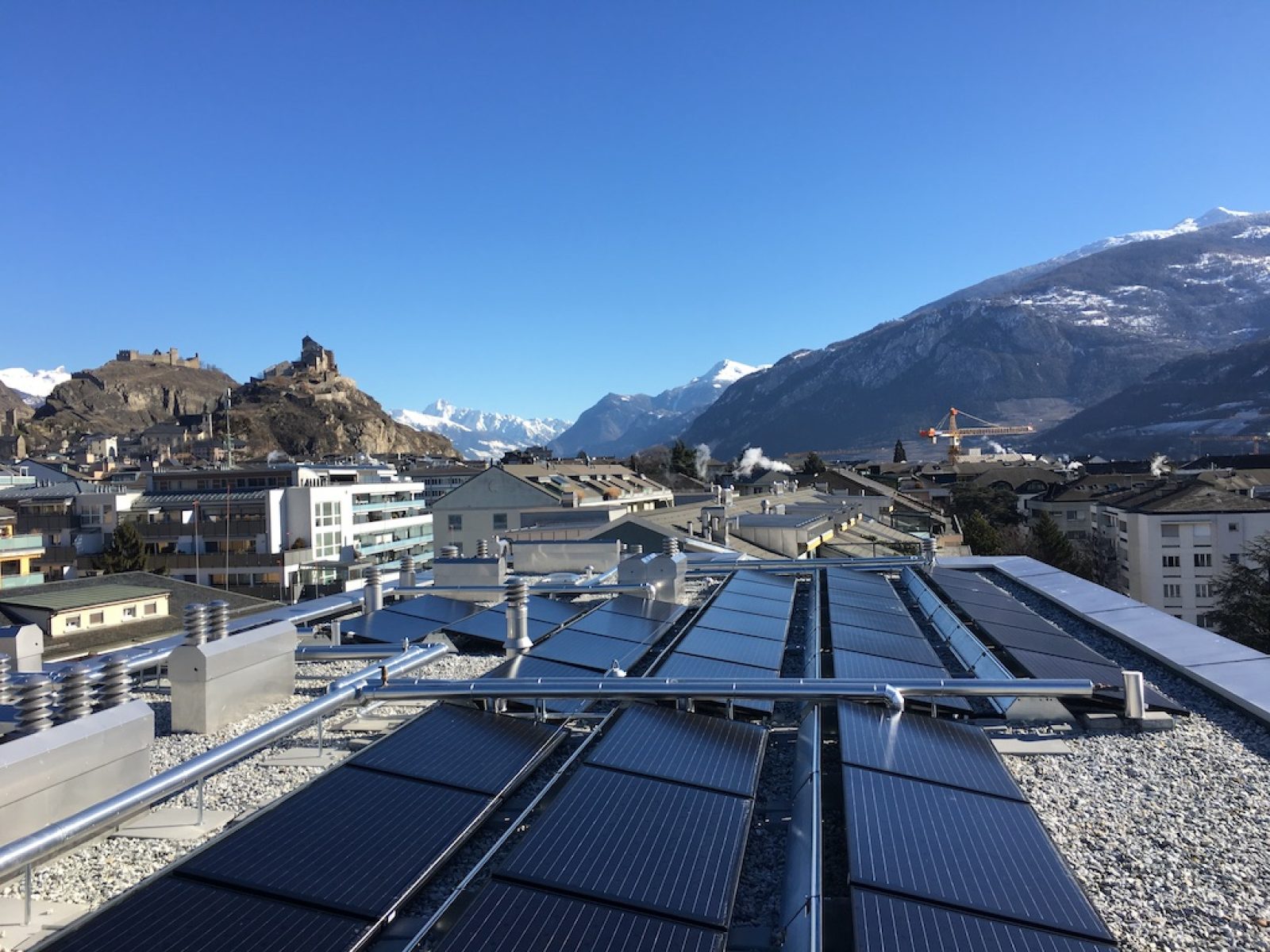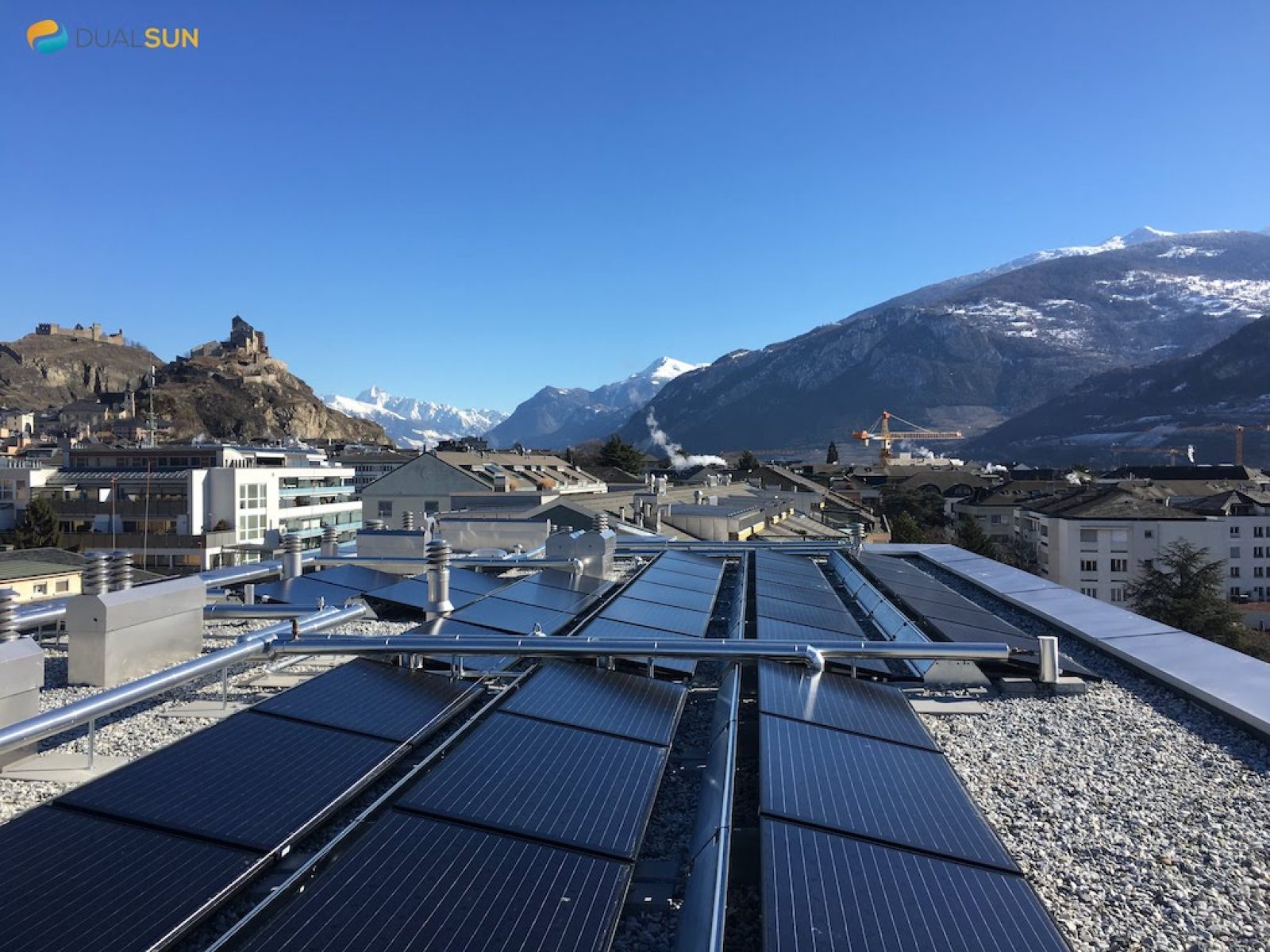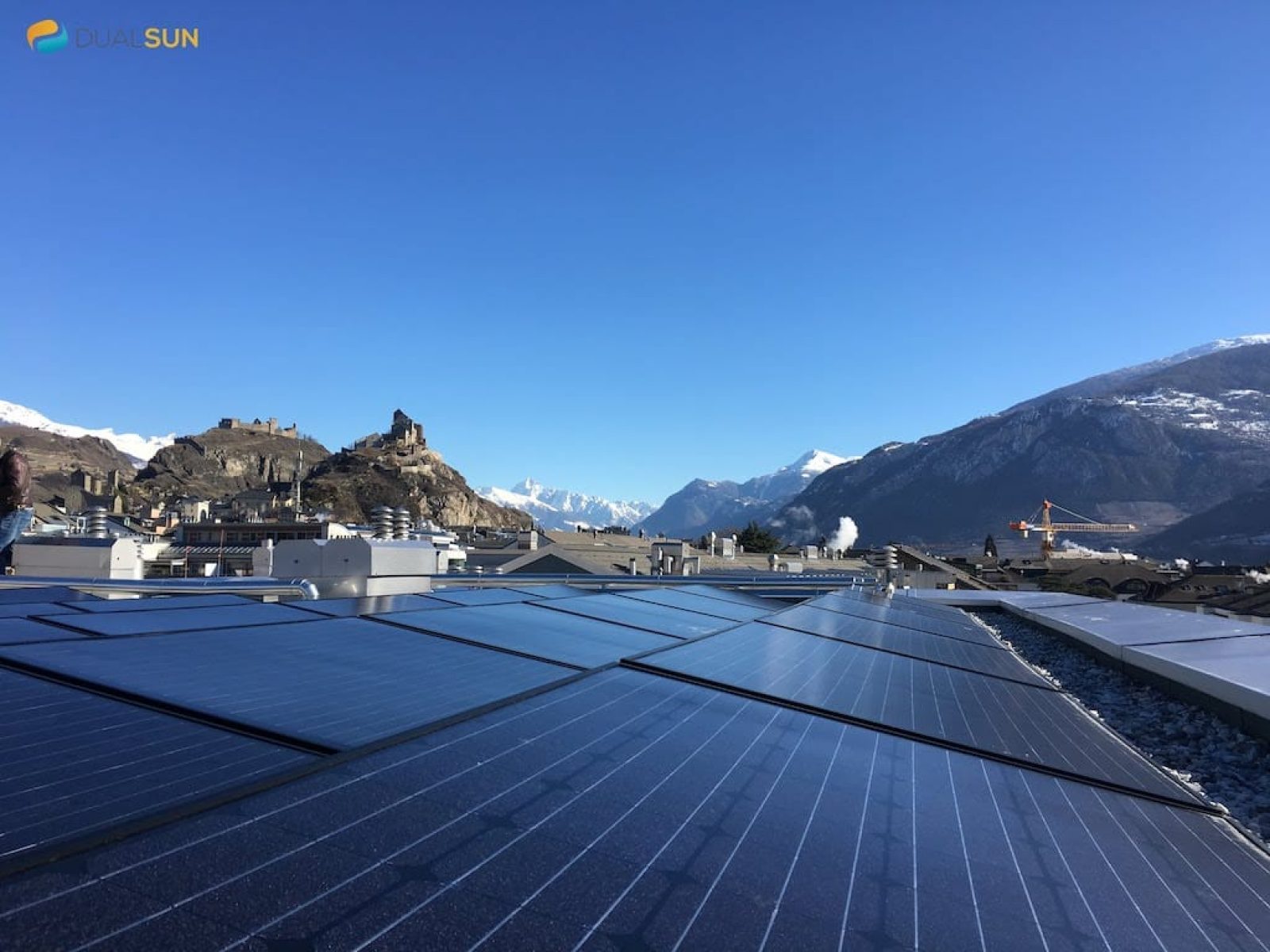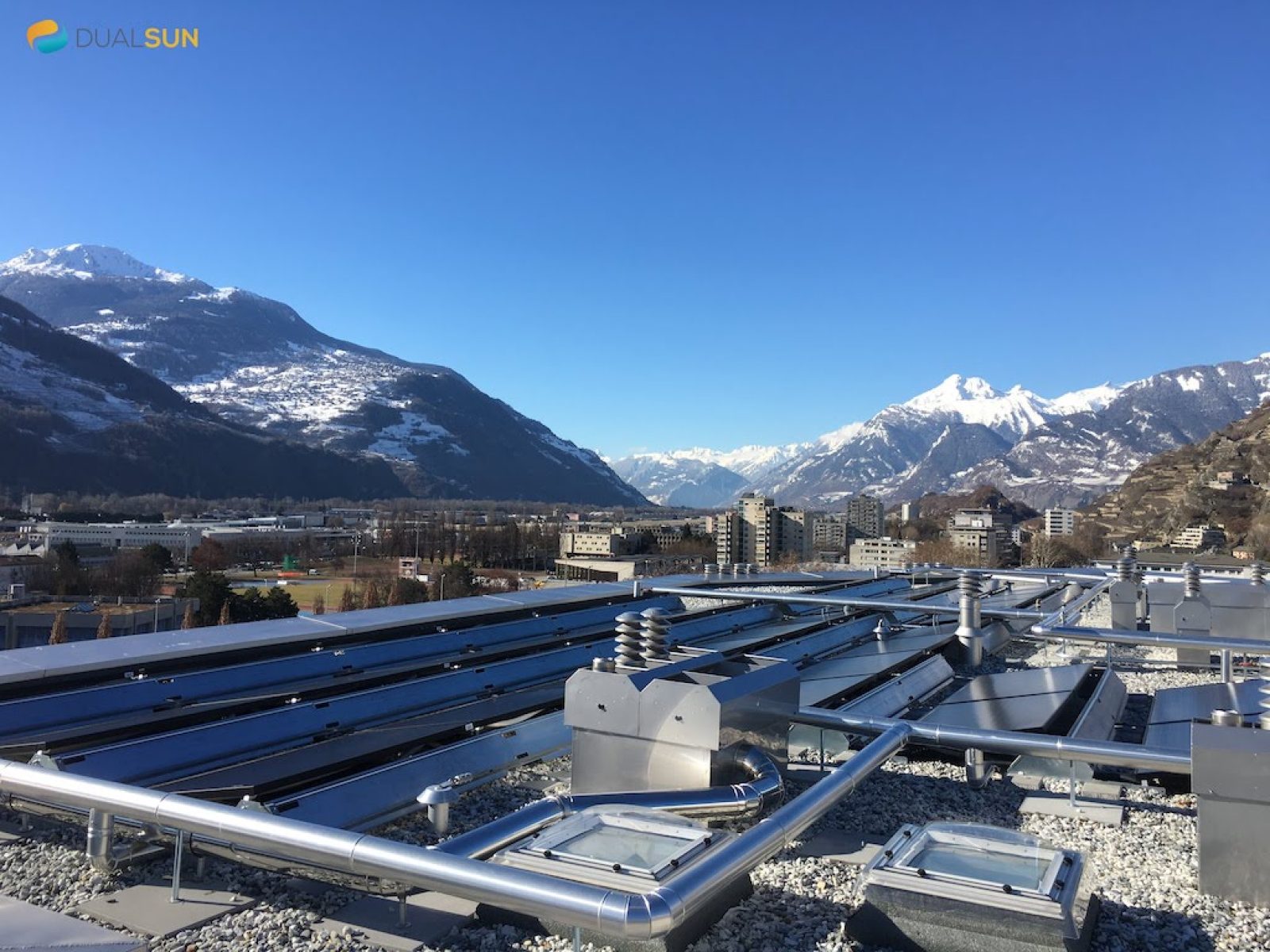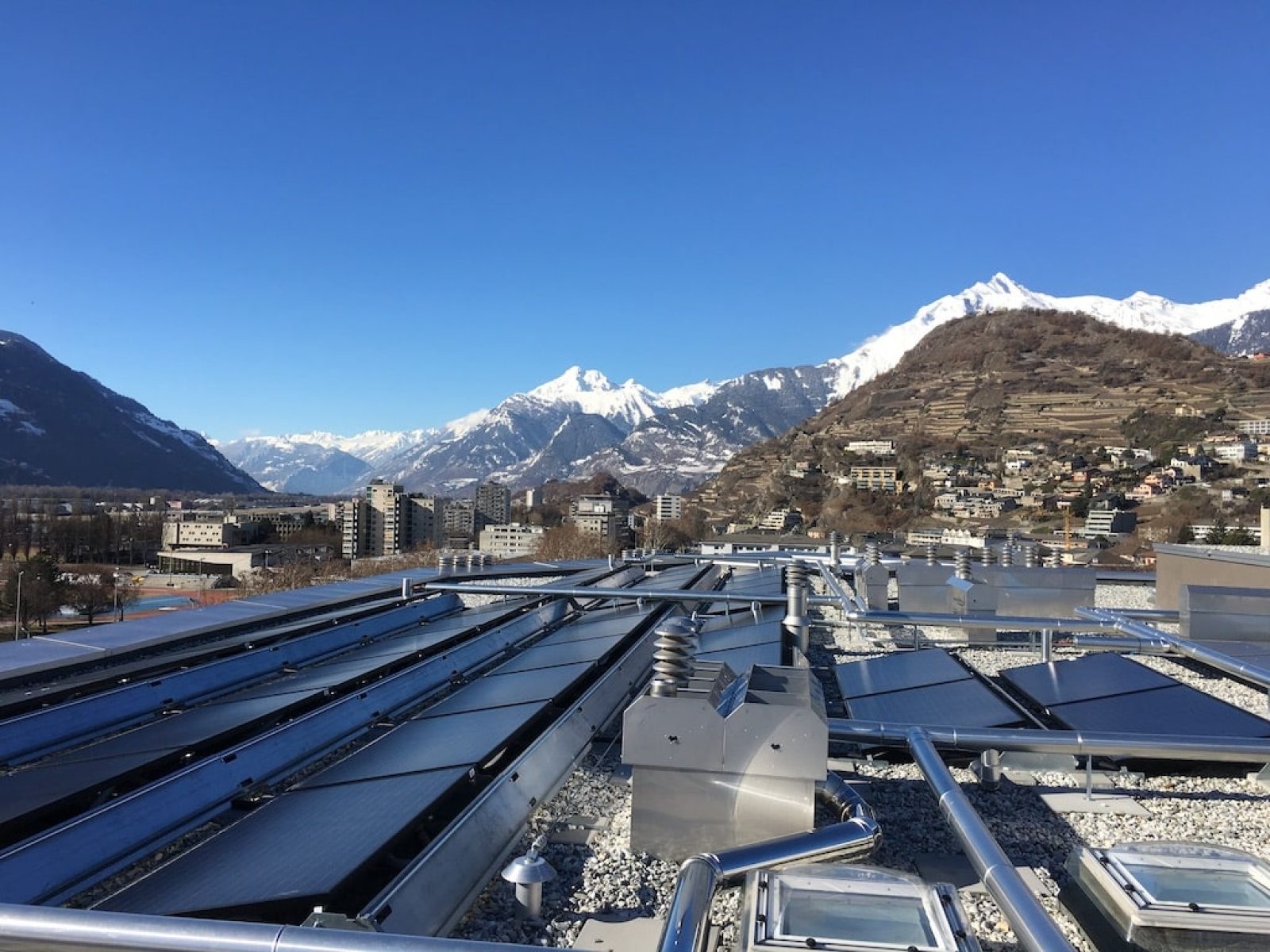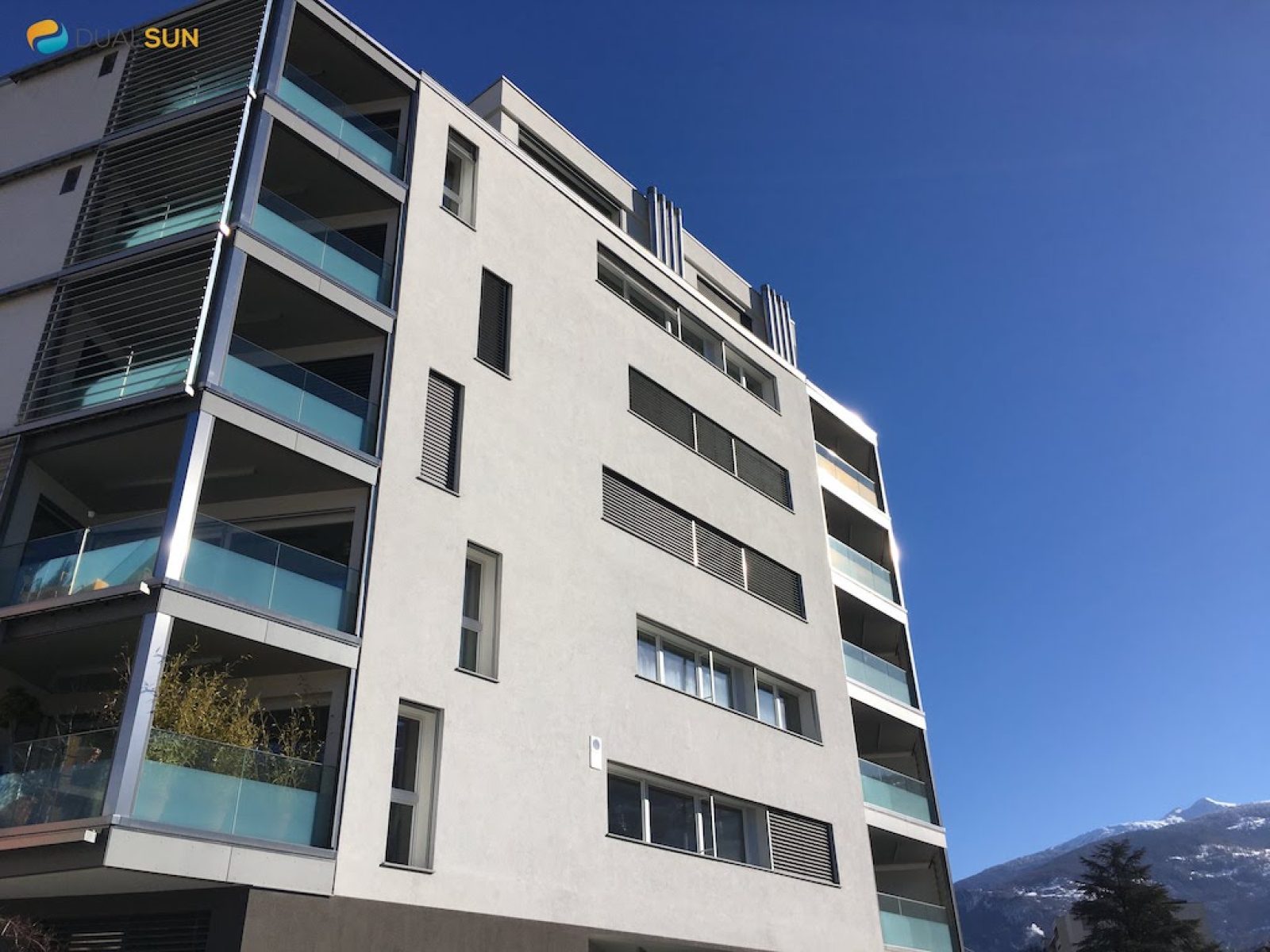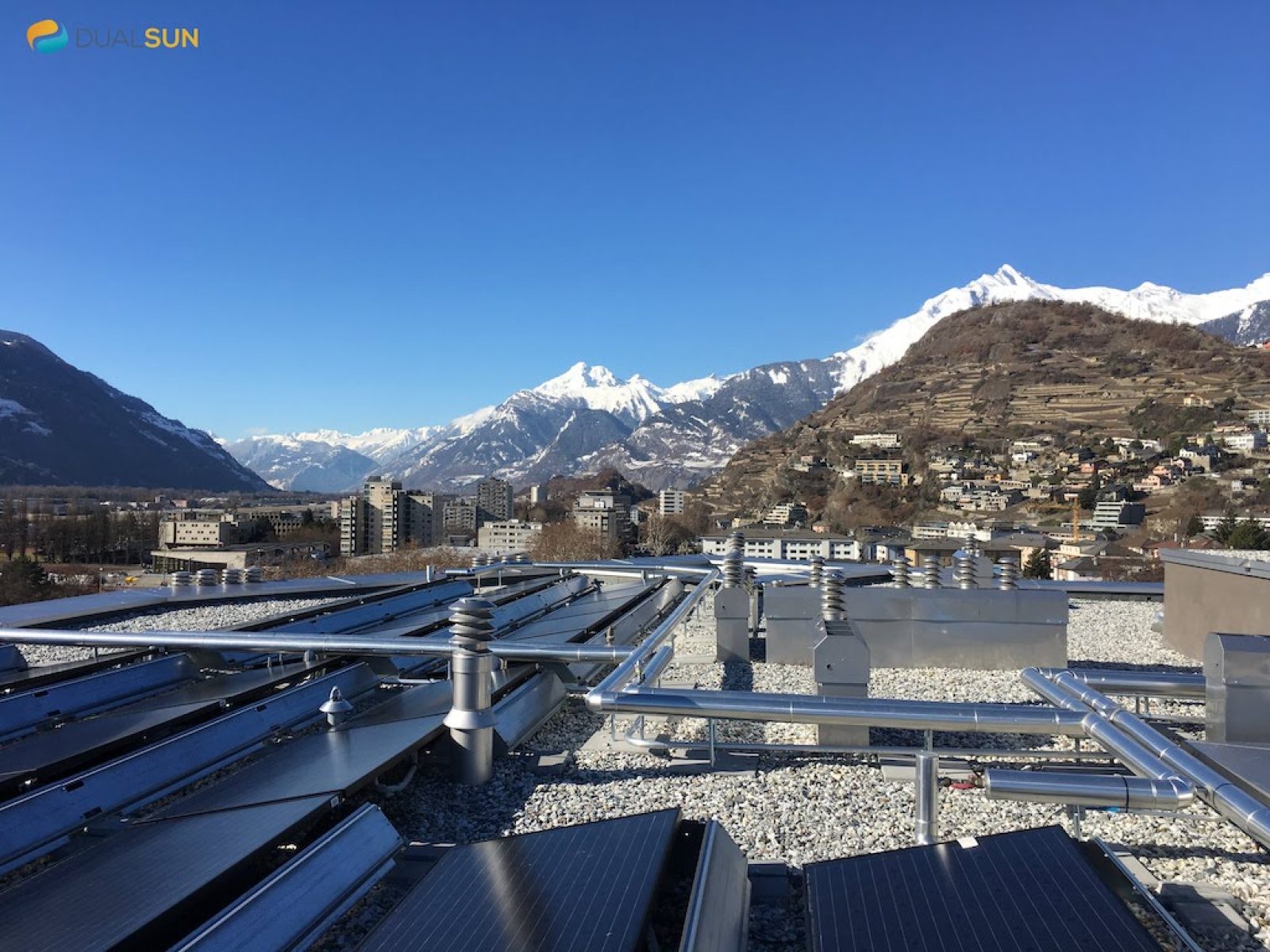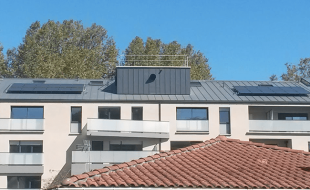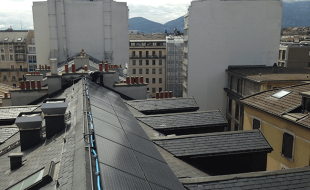This project in photos!
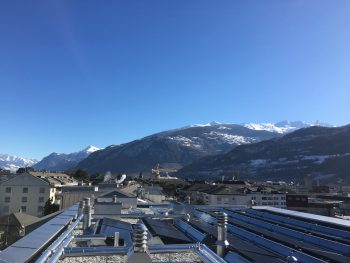

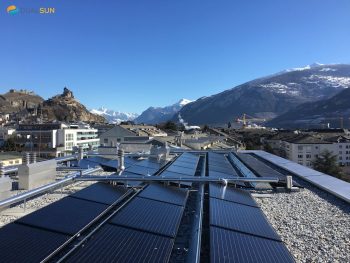
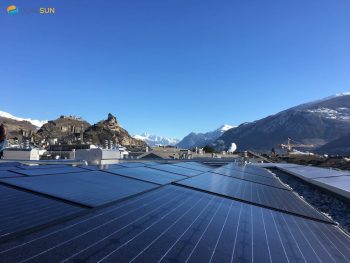
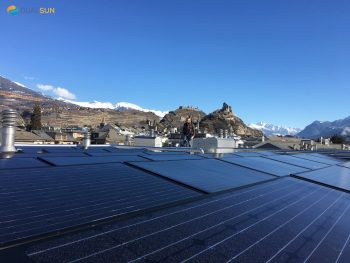
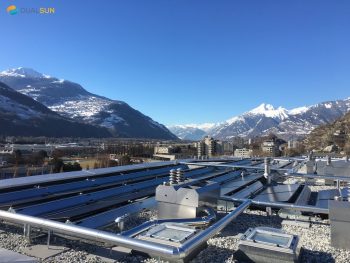
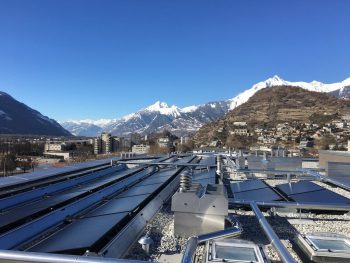
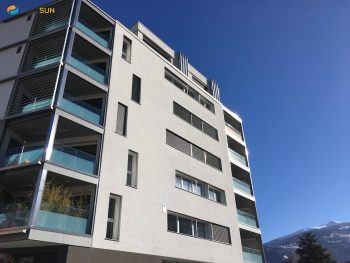
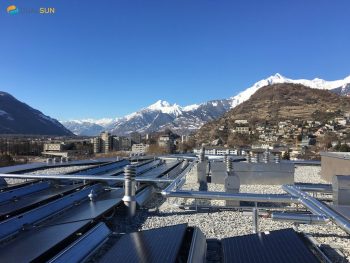
A complete project
This project focuses on two main aspects: firstly, the quality of the construction, to ensure a high level of comfort; and secondly, the energy aspect, with a building that consumes little energy and essentially uses renewable energies.
To achieve this, some forty Dualsun 2-in-1 solar panels were installed on the roof, an ideal solution for optimizing roof space.
The choice of solar technology corresponded to the site’s specifications. Indeed, the Eldorado building is a Minergie building, a label supported by a Swiss profit-making association that aims to reduce the energy consumption of buildings through the rational use of energy and the use of renewable energies.
Reduce energy consumption in buildings with Dualsun 2-in-1 solar panels
To obtain this quality label, the production of renewable energy is included in the criteria. Since roof space is limited, choosing a 2-in-1 solar solution such as Dualsun was the best way to optimize roof space.
In this building, the Dualsun panels will be used to pre-heat domestic hot water, while the photovoltaic output will be consumed by the building itself and supply the common areas, in particular the heat pump.
——————————————————-
Interview with the architectural firm
Installation of the 41 Dualsun hybrid panels went smoothly: “Everyone worked well together”, says the architect, who attaches great importance to the subject of renewable energies. “There’s a real interest in solar energy at Chavaz Architects, and it’s part of the company’s ten-year commitment to creating buildings that do without fossil fuels. What’s more, we do a lot of Minergie buildings. So it’s a question of saving energy through insulation, but also through clean energy production. On this installation, for example, heat is produced (in addition to solar energy) via a geothermal heat pump that draws heat from the water table at a depth of 45 m.”
An optimistic view of solar power in 20 years’ time
“We’ll be seeing more and more solar energy, particularly in different forms. We’re already seeing the possibility of installing solar on facades, and colored panels. There’s still a lot of research underway on new cells at the Ecole Polytechnique Fédérale de Lausanne (EPFL). We can already do a lot more than we could ten years ago, but the technology is still evolving. For example, on this building we have a beautiful south-facing facade, which may become an active facade in a few years’ time”.
